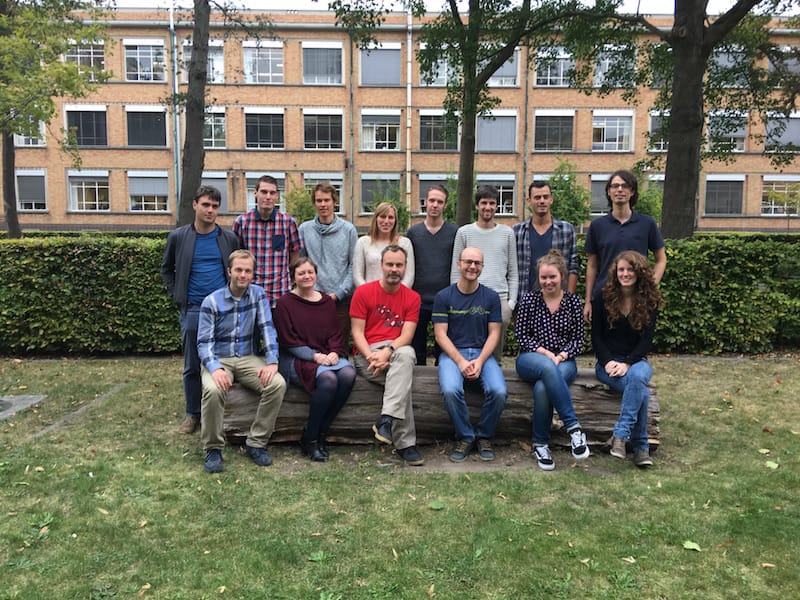Challenge accepted
The iGEM competition is an annual international student competition in synthetic biology organized by the iGEM Foundation, an MIT spin-off. This year, over 250 teams from across the world will participate. From October 27–31, all teams will meet up and present their projects (to each other and to the world) at the giant iGEM Jamboree in Boston, MA.
The idea to participate in this competition came from Prof. Wim Van Criekinge. As part of a bioinformatics course he teaches, he recruited some students to come up with potential entries for the iGEM competition. After a brainstorming session, three projects were proposed. Soon, other professors (such as Marjan De Mey and Yves Briers), advisors and (PhD) students joined the team. Together, they decided to work on a water collection project, which they named Dewpal.
Inspired by a beetle
Dewpal aims to create a structure that can passively collect water from the air by condensation. Drinking water scarcity is a growing problem in many areas in the world, and most current methods of collecting fresh, drinkable water are very resource intensive. Some tools for passively collecting water from the air already exist, such as, for example, fog catchers. These are big nets, created from a particular type of fiber, which are placed in foggy areas to collect water from the humidity in the air. But Dewpal is different. It combines 3D-modeling and printing to create a certain structure, and then enhances this structure using synthetic biology.

The inspiration for the shape of the structure came from the fogstand beetle, Stenocara gracilipes. This beetle lives in the Namib desert and survives by collecting water from the morning fog on its back. The shape of the beetle’s back is being further optimized to make it easier to collect the water once it condenses and to stack the structures for transportation and upscaling purposes.
The ice nucleation protein will do the trick
An important component of the structure is the filament that will be used for printing: It’s a polylactic acid (PLA) filament that contains biotin. Biotin is a vitamin that can bind very strongly to another protein, streptavidin. This interaction is frequently used in biotechnology: for example, for protein purification. In this project, however, this interaction will be used to bind a certain protein to the structure: ice nucleation protein (INP). INP, a protein that can naturally be found on the surface membrane of some bacteria, acts as a nucleation center for ice crystallization. Some of these bacteria use INP to act as a nucleation center for water droplets rather than ice crystals, which is how clouds are created.
This feature of INP will be used to improve the condensation efficiency of their structure. Therefore, a fusion protein of INP and streptavidin will be created. This fusion protein will be able to bind to the structure using the biotin-streptavidin interaction, leaving INP exposed on the surface to improve water condensation. Another approach being investigated involves the expression of both proteins (streptavidin and INP) on the surface of a bacteria, after which these (killed) bacteria are attached to the structure.
The project is already well underway: The best shape for condensation is being determined, and the most important proteins are being cloned. The first prototypes are currently being printed!
Support this project by crowdfunding!
You can follow the progress of the project on Twitter (@iGem_Ghent), Facebook or the website.

Written by guest columnist Bram Danneels, a master student in bio-informatics at Ghent University.


